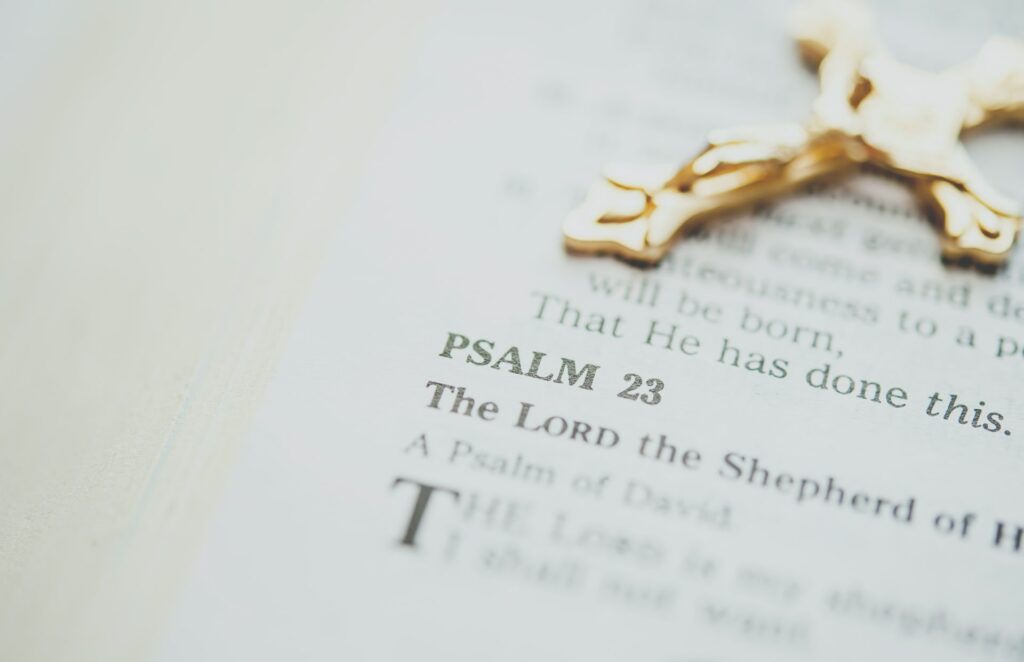Worship—A Pentecostal Perspective VI
BIBLICAL KEYS TO WORSHIP
The Flow and Future of Worship
The Flow of Worship–Currents in the River of Life
The River of Life: Ezekiel’s Vision
As the man went eastward with a measuring line in his hand, he measured off a thousand cubits and then led me through water that was ankle-deep. He measured off another thousand cubits and led me through water that was knee-deep. He measured off another thousand and led me through water that was up to the waist. He measured off another thousand, but now it was a river that I could not cross, because the water had risen and was deep enough to swim in-a river that no one could cross. He asked me, “Son of man, do you see this?” When it empties into the Sea, the water there becomes fresh. But the swamps and marshes will not become fresh; they will be left for salt.
 “Fruit trees of all kinds will grow on both banks of the river. Their leaves will not wither, nor will their fruit fail. Every month they will bear, because the water from the sanctuary flows to them. Their fruit will serve for food and their leaves for healing.” Ezek 47:3-6; 8; 11-12 NIV
“Fruit trees of all kinds will grow on both banks of the river. Their leaves will not wither, nor will their fruit fail. Every month they will bear, because the water from the sanctuary flows to them. Their fruit will serve for food and their leaves for healing.” Ezek 47:3-6; 8; 11-12 NIV
I have found seven biblical models for worship. Of these, the most helpful in understanding the flow of worship is the River of Life. The image is powerful–water headed toward the sea. A mighty river has more than one current. Out in the deep channel it flows with great strength. Nearer the shore the currents are slower and the water not as deep. There is even back-water where the current flows in the opposite direction.
According to Ezekiel, the River of Life is an ever-deepening flow: ankle deep, to knee deep, to waist deep to waters-over-the-head. If we think of it as a description of worship, we see in the main currents of worship, an ever-unfolding manifestation of the Presence of Jesus. For me the four levels of the River refer to four levels of praise and worship:
- Ankle deep water is Thanksgiving–the refreshing starting point. (Psalm 100:4)
- Knee deep water is the Proclamation of Praise–declaring the Lord’s excellence. (I Peter 2:9)
- Waist deep water is Adoration–we move from praise to worship, from talking about God to talking to Him. (Psalm 99:5)
- Over-the-head water is Communion–times we are lost in the presence of the Lord; unaware of things around us. (2 Corinthians 2:12:1-6)
This is an order of worship–Thanksgiving – Proclamation – Adoration – Communion. Change and deeper revelation come when we move from praise (thanksgiving and proclamation) to worship (adoration and communion). Healing is found in the deep water, not in the shallow places. Ezekiel’s river flows inexorably to the Dead Sea. This illustrates the result of true worship–the flow of God’s Spirit to the needs of a hurting humanity. The test of our worship is people finding Jesus–the presence of a healed humanity. “…where the river flows everything will live.”
Two Currents
Jesus said the River of Life has two main currents: Spirit and Truth. For me “spirit” relates to the musical elements of worship (key, style, melody, harmony, tempo) and “truth” corresponds with the textual elements (theme, language, direction, mood). For worship to flow these currents must move in complimentary ways. When two currents in a river collide they form a whirlpool. When spirit and truth fight each other, the whirlpool can draw a worship plan under in a hurry. I have seen some worship plans actually back up and flow away from the River’s destination. As Spirit and Truth flow together whirlpools and backwater eddies are avoided.
The Flow of Truth
At the heart of the flow of worship is thematic planning. In every service, there is a truth the Spirit wants emphasized. The knowledge of the theme comes through prayer and sensitivity to the Holy Spirit. However, I may not see the theme until after I have started stringing songs together. Some recent themes I have used are: “Jesus Is the Cornerstone” “World Missions” “The Holy Presence” “Give Thanks” and “In Spirit and Truth”.
With a theme, we have a basis for selecting from the elements of expression: traditional and contemporary songs, scriptures and prayers. How wonderful to read the scriptures together as a congregation! How powerful it is to hear the people recite the Lord’s Prayer or the Apostle’s Creed! While songs remain our chief liturgy, scriptures and prayers can help transition between sections of worship. Whatever you choose, make sure one thought flows to the next.
wonderful to read the scriptures together as a congregation! How powerful it is to hear the people recite the Lord’s Prayer or the Apostle’s Creed! While songs remain our chief liturgy, scriptures and prayers can help transition between sections of worship. Whatever you choose, make sure one thought flows to the next.
The Flow of Spirit.
This is no less important, nor less spiritual, than the flow of Truth. God made music to flows in certain ways. One is the flow of key relationships I call “musical gravity”–the circle of fourths/fifths. This tonal flow is the musical expression of “decently and in order”. If your songs jump from key to key without good key relationships, your worship will flow in fits and starts. Let me apply the “musical gravity” idea:
- We don’t have to make water flow downhill.
- To get it to flow uphill, we have to pump it.
- I don’t like to pump my song sets–I like for them to flow as naturally as water to the sea.
There are other elements of Spirit as well.
- Styles and meters should not change on every song; they should flow together in logical ways.
- Group songs of unusual styles or meters together (Latin, 6/8, swing, etc.) The same can be said for tempo.
- Direction (singing about God or to God) should not change on every song.
- “Flex Points” are places in the worship plan where we wait for the Holy Spirit to lead us into the unexpected. When He does, this is not a failure in our planning, but a completion of His plan! We prepare in order to be flexible.
As the song says, “Let the River flow!” Poor leadership can divert its flow, create whirlpools where thoughts, images and ideas get all mixed up, or even stagnate it or make it flow backwards, far from the healing force of the Spirit of God. Skillful and anointed leadership can see a hurting humanity find healing at the Throne of God.
The Future of Worship
The River of Life: John’s Vision
Then the angel showed me the river of the water of life, as clear as crystal, flowing from the throne of God and of the Lamb down the middle of the great street of the city. On each side of the river stood the tree of life, bearing twelve crops of fruit, yielding its fruit every month. And the leaves of the tree are for the healing of the nations. No longer will there be any curse. The throne of God and of the Lamb will be in the city, and his servants will serve him. They will see his face, and his name will be on their foreheads. There will be no more night. They will not need the light of a lamp or the light of the sun, for the Lord God will give them light. And they will reign for ever and ever.
Rev 22:1-5NIV
The flow of worship is concerned with relief of human suffering. The River of Life is a healing stream. Ezekiel’s river flows into the Dead Sea and heals it. The leaves of the trees by the river are for healing. In the heart of God there is no conflict between worship and evangelism; worship and preaching. Revelation 22 shows us the future–complete life and health! I believe the future of Pentecostal worship is bright. Some have said that the twentieth century was the “Century of the Holy Spirit”. Perhaps so. In the past one hundred years Pentecostals of the first half of the century, when joined by the charismatics of the second half of the century have grown from just a few believers to a world wide force in Christianity. Pentecostal theology is a respected as any other branch of the church. Pentecostal missionaries are known around the world for their compassion for man and their passion for God. Great Pentecostal congregations are reaching their cities and nations for the Lord Jesus. But, I believe the true “century of the Holy Spirit” will be the twenty-first century. Not only is Pentecostal worship, that is, Holy Spirit led and empowered worship, spreading around the world through missions, powerful churches and individual believers, the move of the Holy Spirit is spreading throughout the church. Believers of every stripe are being baptized in the Holy Spirit with the evidence of speaking in other tongues. I used to think of three great forces in Christianity: Catholic (Roman and Eastern Orthodox), Protestant and Pentecostal. But in the Holy Spirit will not be so corralled! I believe our grandchildren will see a church that will be thoroughly Spirit-led and empowered regardless of the name on the sign out front. Our brothers and sisters in catholic and mainlines protestant churches are learning the ways of the Holy Spirit.
There is much for the Pentecostal/charismatic community to learn from the wider Christian church. Richard Foster identifies six major streams of spirituality in the twenty-first century church:
- The Contemplative Tradition–the Prayer-filled Life;
- The Holiness Tradition–the Virtuous Life;
- The Charismatic Tradition–the Spirit-empowered Life;
- The Social Justice Tradition–the Compassionate Life;
- The Evangelical Tradition–the Word-centered Life;
- and The Incarnational Tradition–the Sacramental Life.
 As Foster presents them, each of these traditions began with Jesus and has found champions throughout history. Until now they have flowed side-by-side as currents in the River of Life. This century will see them flowing together, converging into an even mightier river. It is already happening. For example, Assemblies of God missionaries (Pentecostal/charismatics) are now heavily involved in healthcare and humanitarian ministries (Social Justice) as well as evangelism in the USA and around the world. Evangelicals (Word-centered believers) are increasing in their appreciation of the Sacraments (the Incarnational Tradition). As the charismatic renewal continues, worshipers from every stream of Christianity are receiving a prayer language from the Holy Spirit.
As Foster presents them, each of these traditions began with Jesus and has found champions throughout history. Until now they have flowed side-by-side as currents in the River of Life. This century will see them flowing together, converging into an even mightier river. It is already happening. For example, Assemblies of God missionaries (Pentecostal/charismatics) are now heavily involved in healthcare and humanitarian ministries (Social Justice) as well as evangelism in the USA and around the world. Evangelicals (Word-centered believers) are increasing in their appreciation of the Sacraments (the Incarnational Tradition). As the charismatic renewal continues, worshipers from every stream of Christianity are receiving a prayer language from the Holy Spirit.
Pentecostal theologian, Simon Chan is working to place Pentecostal spirituality within the larger context of ancient Christian Traditions. Our belief in signs, wonders, miracles and active gifts of the Spirit links us to the mystics and ascetics of ancient Christianity than we are the super-rational groups of the Enlightenment who favor Word over Presence. There is much for us to learn from the charismatic renewal in the mainline churches. The idea of Convergence worship, the intentional merger of the contemporary move of the Spirit with ancient forms of spirituality, holds great promise for this century. . Is there scripture for this wonderful vision of the future? I believe it is found in the Psalms.
Let this be written for a future generation, that a people not yet created may praise the LORD:
“The LORD looked down from his sanctuary on high,
from heaven he viewed the earth,
to hear the groans of the prisoners
and release those condemned to death.”
So the name of the LORD will be declared in Zion and his praise in Jerusalem
when the peoples and the kingdoms assemble to worship the LORD.
Ps 102:18-22NIV
“When the peoples and the kingdoms assemble to worship the Lord”, the world will see an absolutely unprecedented visitation of the Holy Spirit. When ‘the name of the Lord will be declared in Zion and his praise in Jerusalem” means that the church will experience a worship renewal of unprecedented dimensions. Regardless of the culture of the worship services, whether high church or low, urban or rural, regardless of the languages used, Jesus will be the center. The “peoples” means the ethnic groups and the “kingdoms” means the political and power groups. When the church lays aside all these artificial but critical divisions and centers herself on her king, when we “assemble to worship the Lord,” not to deliberate, not to debate, but to repent; when we gather not to politic or pontificate but to praise; when we finally come together in the name of Jesus for no other purpose than to worship our king, He will hear us and respond. He will “hear the groans of the prisoners and release those condemned to death.”
I believe we and our children and grandchildren of this century make up that “future generation”.
Conclusion
Pentecostal Worship is Scriptural. It is led and empowered by the Holy Spirit. It involves the whole congregation in sacrificial ministry to the Lord with psalms, hymns and spiritual songs. It is the flow, the healing flow of the Spirit of God to the healing of the nations.
Dr. Steve Phifer received a Doctorate in Worship Studies from the Robert E. Webber Institute for Worship Studies. He has taught at Valley Forge University and Southeastern Assemblies of God University. For many years he was the Worship Pastor at Word of Life Church in Alexandria, VA.
More of Dr. Phifer’s materials can be found at stevephifer.com.
